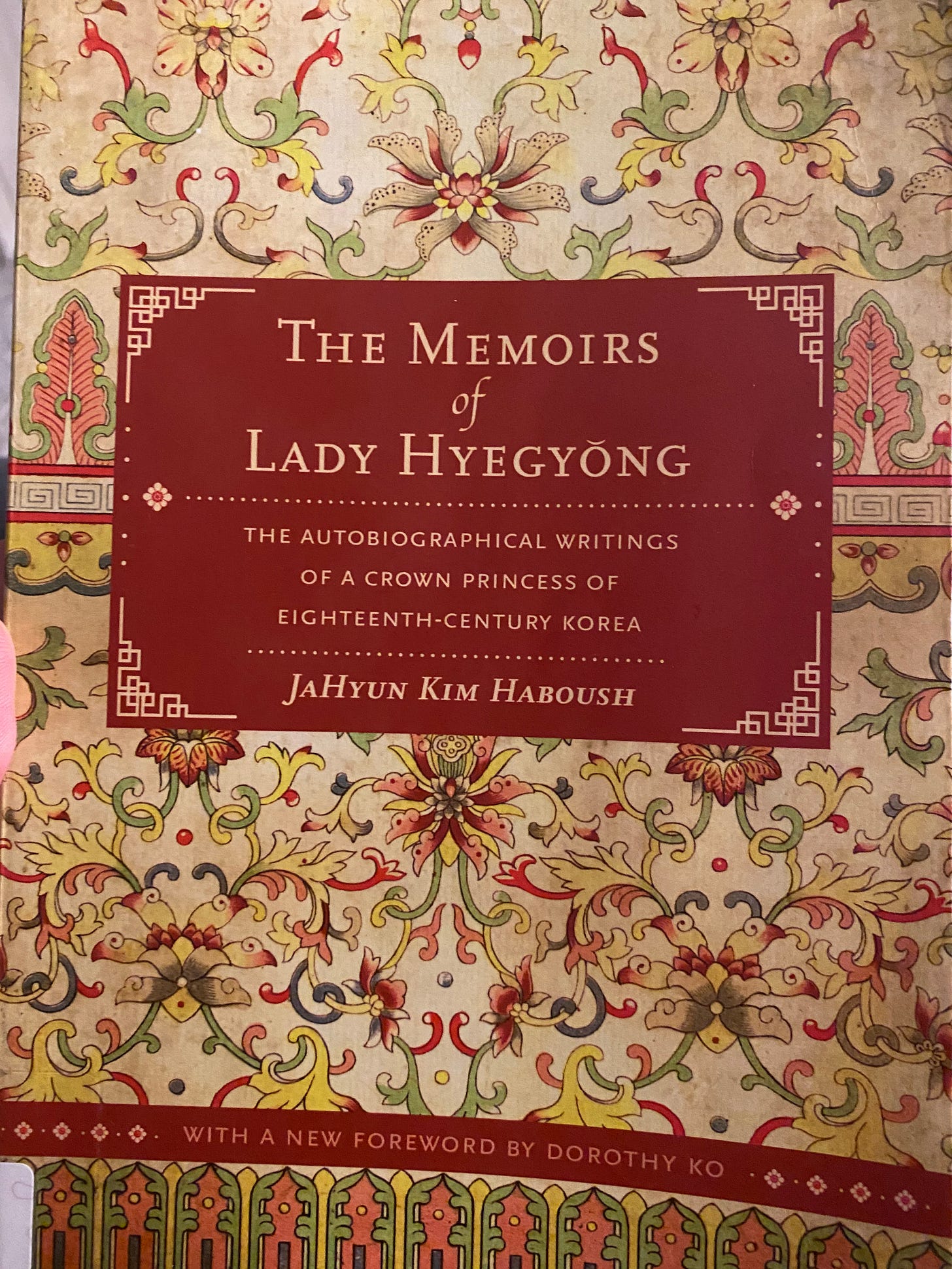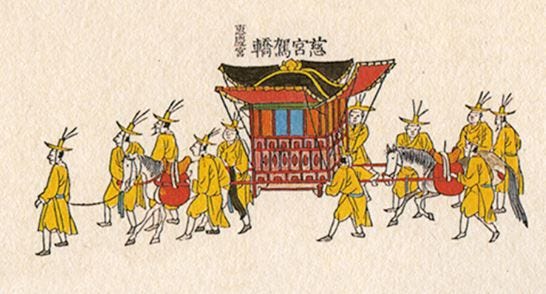I went on a roller coaster ride with this pick. As it is often said about the Small Works List, I have no idea where this name came from or in what context it was meant to be read. I imagine if I went back to find where I found this name it would be from the Norton World Literature Anthology and it would be a short clipping of the incident that this whole text swirls around. What I find enchanting about this idea is that it sort of places as the fulcrum of Korean history this family drama and from the locus of this event there is a father and son struggling to understand their humanity together, the nature of good and evil is being wrestled with and the hope of a family and a nation hang in the balance of one simple act.
Memoirs of Lady Hyegyong
When I pulled this name in the Henri Michaux Youtube Video, I was a 0% knowledge of who this person was, I didn’t even know how to pronounce the name and did not try in that recording. I watched a few Youtube videos to get a sense of it. It seems fairly close to the phonetical approach to the name if you are wondering. Hig Yong or that seemed to be the consensus.
(This is an actual image of Lady Hyegyong’s Palaquin for the funeral procession for her Father-in-law, His Majesty).
Lady Hyegyong was a noblewoman of Korea who lived from 1735 to 1815. I don’t want to get biographical information incorrect here because reading the memoir is not necessarily the most historically accurate description of events, but she was married to the Crown Prince Sado when they were both 9 years old. She lived in the palace the rest of her life. She has a personally fascinating life story, but instead of focusing on herself and her own actions though they are present in the story, she is focused on the life of her father-in-law “His Majesty” who remained king for most of the memoir, Crown Prince Sado (her husband who eventually suffered from a grave mental illness which led to some very violent and atrocious behavior) and the Grand Heir, her son who would eventually become king.
I found a fascinating link to this time period represented in images called Dynasty in Miniature.
The copy I read contains 4 different documents composed at different times, the first in 1795 is a straight fairly objective seeming history of the people and places concerned in the story. There is a key event that happens in the life of this family but it is only hinted at in this text. The second memoir was composed in 1802 which is an oblique angle on this controversy and sets up some major players and their motivations. The third memoir gets closer to this central event but is meant more to tell the story of the Grand Heir, Lady Hyegyong’s son to who will become the king or is already the king which would be her Grand Son. Lady Hyegyong outlives His Majesty, Prince Sado, and the Grand Heir, and so she is retelling these stories to her grand son (it seems to me). The last memoir is a direct confrontation with the events that have been hinted at throughout the work, when His Majesty, her father-in-law, killed Prince Sado by locking him in a rice chest for 8 days. It is one of the most affecting moments I have ever read in literature in my life. It is bizarre, difficult, and brilliantly captured by Lady Hyegyong and the translator of the work.
I will remember this book for as long as I live. It moved me deeply and feels like it is now a part of my memory in a way that I cannot really communicate. One of the elements of this story is that this comes from a vastly different set of context and timeframe that I know almost nothing about. It is because of this cultural difference that I had to completely depend upon the translator and editor to show me what was important. Because a great deal of this project is world literature, I will constantly have to depend upon translators and editors to scrape together some meaning from these long ago and far away titles.
But the person I want to draw attention to here is JaHyun Kim Haboush who translated and edited The Memoirs of Lady Hyegyong which was masterful document. I don’t think I have ever noticed so explicitly the way a translator was helping to shape the experience of the reader. Because the context for this writing is so remote from my experience or any research I have done in the past, and I think that is the notion of Haboush’s conception of the reader, that she very subtly and helpful guides the reader through the experience. Haboush almost anticipates the questions the reader would have at any given moment in the text, and just when you need a footnote there would be an expertly crafted and very subtle note about some word, phrase, place name, or date that would put you back into the flow of reading. I have never had this experience before to feel guided lovingly through a document, where just when you have a thought a footnote would be there but then when she wants to trust the reader to remember a detail, a footnote is absent and it sort forces you to reflect on what you know so far. It was truly the stuff of genius.Because of my gratitude for her abilities and execution here, I went to Twitter to see if Haboush has an social media presence and to thank her personally. It must have been pretty late, one of these thoughts that catch you in a dream and you wake up and scroll through twitter to look into it. In February, Haboush’s niece Stephanie Kim, a professor in her own right, posted something to Medium.com to celebrate her aunt’s life. Haboush had a fascinating life story that really culminated in this translation and this academic work and to her Kim’s love of her eccentric aunt was wonderfully endearing. This is the stuff of this project. Please read this book.


Comments
Post a Comment